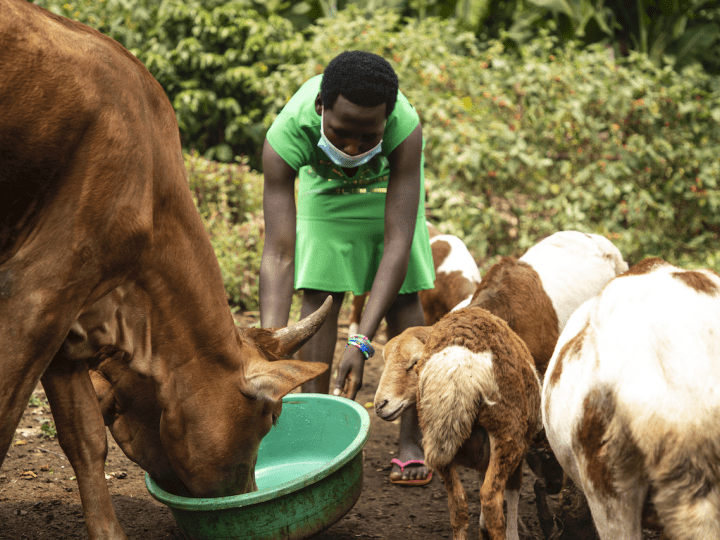
Resilience and Livelihoods
(2021-2025)
VISION
Break the cycle of intergenerational poverty.
GOAL
To contribute to improved resilience and livelihoods of 367,578 most vulnerable households for sustainable well-being of children by 2025. More than 1.8 million children to be reached by 2025.
Who will the programme IMPACT?
- Most vulnerable households from rural and peri-urban populations.
- Ultra-poor (poor of the poor) households from refugee communities, host communities, internally displaced persons, and fragile context, including Karamoja sub-region.
What will the programme ACHIEVE?
- 243,750 household members actively participating in saving groups.
- 4,875 farmer groups trained and linked to business development services.
- 243,750 household members accessing markets (for both input and output).
- 243,750 household members adopt the growing of bio-fortified and high nutrient foods.
- 60,938 households accessing insurance products to cushion against shocks and stresses.
- 243,750 household members adopt climate-smart agricultural practices and technologies such as Farmers Managed Natural Regeneration, agroforestry, and the use of energy-saving technologies.
How will this be ACHIEVED?
- Promote climate-smart agricultural practices and technologies.
- Ensure households adopt enhanced livelihood strategies, and enjoy improved market access.
- Promote a saving culture and access to microfinance amongst households.
- Promote improved post-harvest handling practices and technologies.
- Engage and empower households to produce nutrient-dense foods.
- Promote disaster risk reduction and climate change adaptation.
- Collaborate with the Government ministries, departments, and agencies, the private sector, microfinance institutions, research institutions, UN Agencies, and other donors to increase access to productive assets, information, and technologies.
What will SUCCESS look like?
- Households have sufficient, sustainable income to meet their basic needs.
- Households have sustainable access to sufficient nutritious foods.
- Households are resilient to shocks and stresses.
Our APPROACHES and MODELS
Building Secure Livelihoods
Support 'marginally poor' households with young children to sustainably improve their agricultural production and increase family income.
Key activities;
- Support and strengthen a savings culture, and financial inclusion through both savings groups and
- microfinance services.
- Equip families with financial literacy.
- Support sustainable agricultural production through training in climate-smart agriculture practices and techniques.
- Promote functional community-based disaster risk management structures to ensure households are resilient to shock and stresses.
Saving for Transformation
Improve household income through saving groups.
Key activities
- Train household members in financial literacy and encourage them to create self-reliant savings groups.
- Support established savings groups to effectively manage savings and increase financial security of its members.
Ultra-poor graduation
Support extremely poor households to engage in productive and resilient livelihoods.
Key activities
- Support families to meet basic needs, deal with crises, and access health and education services.
- Facilitate families with opportunities and skills to generate incomes and become resilient
- Increase access to financial credit.
We are PRESENT in 29 districts
An updated map
- Kagadi
- Soroti
- Agago
- Oyam
- Gulu
- Omoro
- Kakumiro
- Kikuube
- Butambala
- Nakasongola
- Tororo
- Bugiri
- Busia
- Butelejja
- Buikwe
- Kampala
- Pader
- Kapelebyong
- Amudat
- Moroto
- Kotido
- Amuria
- Moyo
- Adjumani
- Obongi
- Lamwo
- Lira
- Mbale
- Kole
*Statistics as of 2021